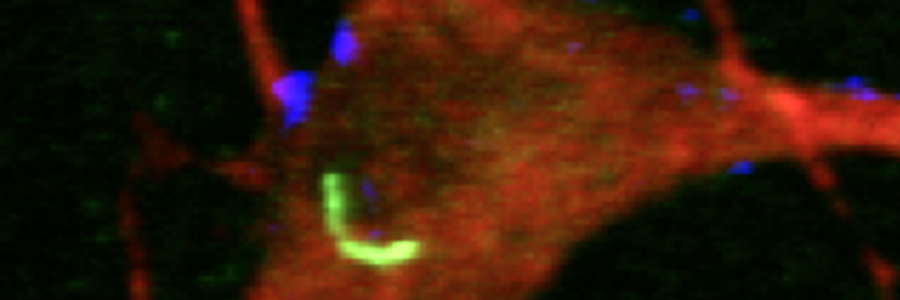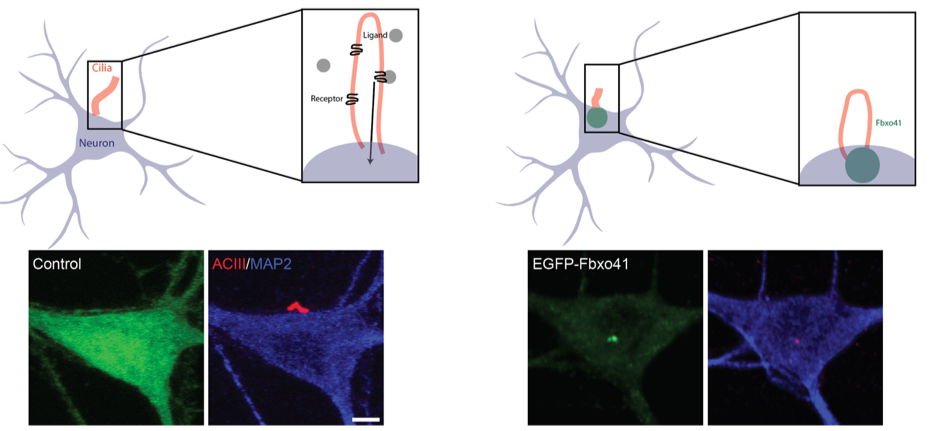
Dr. Cillian King, Ana Rita Quadros and colleagues published their work on the modulation of cilia structure in the brain in Scientific Reports
Primary cilia are antennae-like sensory organelles that project from the plasma membrane of a wide variety of cells, including neurons. Both primary cilia membrane and cytosol content are isolated from the rest of the cell. This allows cilia to concentrate several signaling pathways, and act as a sensory organelle for extracellular and intracellular cues. Mutations disrupting ciliary structure can lead to debilitating disorders, referred to as ciliopathies, which have pleiotropic clinical features. Among the 87 genes associated with ciliopathies, 77 genes have been linked to neurological deficits in humans, such as altered brain anatomy, obesity, and intellectual disability. Even though cilia structure is decisive for brain development and disease, the mechanisms regulating it are poorly understood. Researchers from the Ruud Toonen lab at the Vrije Universiteit of Amsterdam have now identified Fbxo41 and the diacyl glycerol pathway as novel stimuli that regulate neuronal cilia structure.

The investigators identify Fbxo41 as a novel E3-ligase complex subunit, a component of the ubiquitin pathway system. The investigators showed that Fbxo41 targets to neuronal centrioles where its accumulation promotes disassembly of primary cilia. They observed that levels of Fbxo41 at the centrioles inversely correlate with neuronal cilia length, and mutations that disrupt Fbxo41 function also disturb its function in cilia disassembly and signaling. Fbxo41 dependent cilia disassembly in mitotic and post-mitotic cells requires rearrangements of the actin-cytoskeleton, but needs Aurora A kinase activation only in mitotic cells, highlighting important mechanistical differences controlling cilia size between mitotic and post-mitotic cells. Phorbol esters, which mimic the action of diacyl glycerol and activate protein kinase C, induce recruitment of Fbxo41 to centrioles and cilia disassembly in neurons, but disassembly can also occur in absence of Fbxo41.
These results show new mechanisms that regulate cilia in neurons, and may help to better understand the role of these structures in neurons. This knowledge is essential to prevent and treat cilia dysfunction in ciliopathies.
For the original article, see King et al., Fbxo41 Promotes Disassembly of Neuronal Primary Cilia, Scientific Reports